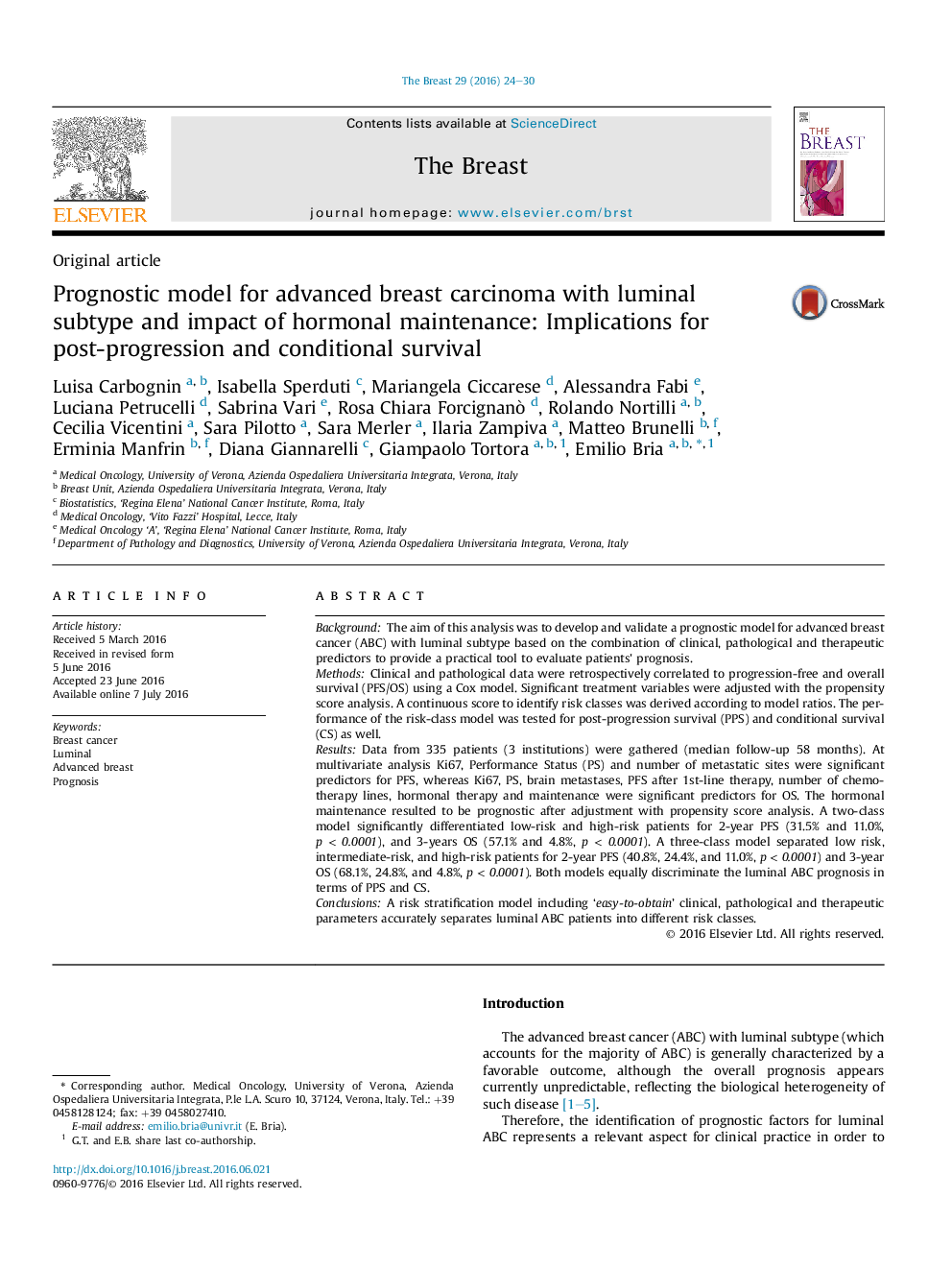| Article ID | Journal | Published Year | Pages | File Type |
|---|---|---|---|---|
| 6169350 | The Breast | 2016 | 7 Pages |
â¢Prognosis of luminal advanced breast cancer (ABC) appears currently unpredictable.â¢The current analysis creates and validates a prognostic nomogram for luminal ABC.â¢The deriving model strikingly discriminates prognosis at different time-points.â¢Among therapeutic variables, the hormonal maintenance prolongs patients' outcome.
BackgroundThe aim of this analysis was to develop and validate a prognostic model for advanced breast cancer (ABC) with luminal subtype based on the combination of clinical, pathological and therapeutic predictors to provide a practical tool to evaluate patients' prognosis.MethodsClinical and pathological data were retrospectively correlated to progression-free and overall survival (PFS/OS) using a Cox model. Significant treatment variables were adjusted with the propensity score analysis. A continuous score to identify risk classes was derived according to model ratios. The performance of the risk-class model was tested for post-progression survival (PPS) and conditional survival (CS) as well.ResultsData from 335 patients (3 institutions) were gathered (median follow-up 58 months). At multivariate analysis Ki67, Performance Status (PS) and number of metastatic sites were significant predictors for PFS, whereas Ki67, PS, brain metastases, PFS after 1st-line therapy, number of chemotherapy lines, hormonal therapy and maintenance were significant predictors for OS. The hormonal maintenance resulted to be prognostic after adjustment with propensity score analysis. A two-class model significantly differentiated low-risk and high-risk patients for 2-year PFS (31.5% and 11.0%, p < 0.0001), and 3-years OS (57.1% and 4.8%, p < 0.0001). A three-class model separated low risk, intermediate-risk, and high-risk patients for 2-year PFS (40.8%, 24.4%, and 11.0%, p < 0.0001) and 3-year OS (68.1%, 24.8%, and 4.8%, p < 0.0001). Both models equally discriminate the luminal ABC prognosis in terms of PPS and CS.ConclusionsA risk stratification model including 'easy-to-obtain' clinical, pathological and therapeutic parameters accurately separates luminal ABC patients into different risk classes.
